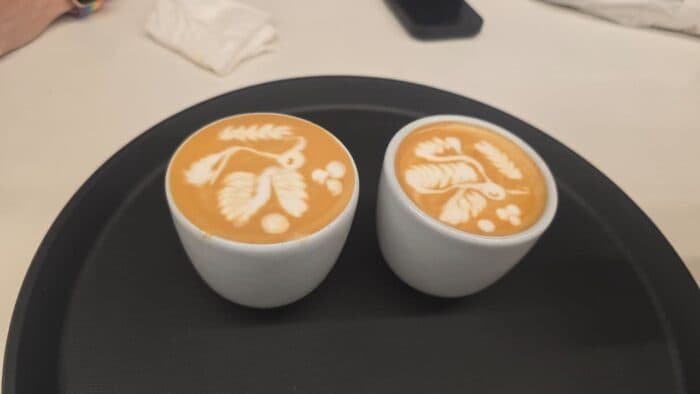The concentrated coffee is gaining great popularity with the explosive growth of cold brew and ready-to-drink beverages. While instant coffee leads in convenience, it fails to meet the demand for quality. Efforts to improve the quality of instant coffee have borne fruit, but future generations are expected to rely on concentrated coffee.
This year, concentrated coffee has become popular in cafes and on social media, featuring in recipes ranging from cold brew to espresso-based drinks and martinis. Meanwhile, instant coffee remains a strong market value, comprising 25% of globally consumed coffee in 2022.
Concentrated coffee seems to have the upper hand – offering convenience, quality, variety, and competitive pricing. Can instant coffee, the long-standing backbone of convenient coffee, compete with concentrated coffee in the long run?
“The presence of bottled prepared coffee for quick relief or on-the-go consumption has been increasing, at least in the American market, over the past ten to fifteen years,” says Matt Swenson, Vice President of Coffee Operations at Farmer Brothers Coffee.
Concentrated coffee wasn’t a sudden phenomenon – it was slowly gaining traction. Cold brew sparked interest in concentrates in the sixties, with the launch of the Toddy brewing device. However, it didn’t become popular until 2010 when major specialty coffee brands began offering ready-to-drink coffee products.
In the past decade, consumer interest in cold brew has rapidly increased, with grocery stores dedicating whole sections to cold brew and ready-to-drink beverages.
The number of retailers carrying concentrated coffee has increased over the past three years, with brands like Stumptown, La Colombe, Blue Bottle, Chameleon, and High Brew being part of this trend. In 2023, cold brew and ready-to-drink espresso distributors allowed for significant expansion in ready-to-drink and cold brew coffee in cafes.
“Less than ten years ago, only a few people could produce liquid coffee on a commercial scale… Now it’s hard to keep track, it’s become so common.”
In a 2023 survey, about 65% of Millennials and 48% of Gen Z Americans said they were more likely to buy concentrated coffee in the next year due to its ease and variety. In fact, online sales of concentrated coffee increased by nearly 20% in 2023.
“While convenience initially drove the ready-to-drink coffee trend, Millennials and Gen Z consumers are encouraged to explore brands and different brewing methods through social media, especially in the cold brew category.”
With higher incomes and different consumption behaviors, they prioritize high-quality coffee. Since home coffee preparation increased during the COVID-19 pandemic, many consumers have retained their skills and preferences for coffee quality and sustainability.
Specialty coffee culture has entered mainstream consumption in recent years, and Gen Z is the first generation to grow up with widely available specialty coffee. This means there are now consumer expectations for minimum quality standards.
Instant coffee has long dominated the convenient coffee market but doesn’t fully meet consumer expectations for quality. It was never meant for high-quality beverages, as the drying process naturally deteriorates volatile flavor compounds. However, its availability and ease of use have kept it in demand for decades.
However, with less intense flavor and texture compared to concentrate-based coffee drinks, it will struggle to keep up with quality demands.
“While instant coffee retains some of the healthful compounds found in brewed coffee, it lacks the nuanced flavors found in specialty coffee,” says Krzysztof Parabosz, Head of Coffee at Hard Beans and co-founder of Hardtank.
In contrast, cold brew is characterized by lower acidity, smoother taste, and higher caffeine concentrations compared to traditionally brewed coffee.
“The popularity of cold brew concentrates and ready-to-drink cold coffee beverages is rapidly increasing at the expense of the instant coffee market, due to the growing demand for specialty coffee options.”
With traditional instant coffee meeting convenience demands but lacking in quality, the past few years have seen investments from specialty brands in high-quality instant coffee ranges.
Brands like Verve, Proud Mary, and Blue Bottle have introduced excellent instant coffee ranges, and Intelligentsia has gone a step further, opening a cafe in California exclusively using instant espresso.
“The mature concentrated coffee sector can efficiently manufacture specialized lines on a smaller scale, while the large focus on the instant coffee sector is a defining factor for specialty lines.”
According to Krzysztof, freeze-drying or spray-drying instant coffee requires more processing and packaging compared to concentrates.
“This simple process for manufacturing concentrates can lead to lower production costs, including reduced energy usage and fewer additives needed to preserve the coffee,” he says.
Furthermore, the potential return on investment is higher for coffee concentrates.
“Concentrated coffee often commands a higher price in the market due to its perceived quality and variety, allowing roasters and manufacturers to achieve higher profit margins compared to standard instant coffee products.”
“The explosive growth and innovation we’ve seen in the ready-to-drink coffee sector indicate tremendous potential for expansion and market penetration in the near future.”
However, not everything is bleak for the instant coffee sector. According to Matt, consumers are changing their perception of instant coffee, viewing it more positively. This makes the time exciting for both concentrated and instant coffee.
“Specialty instant coffee is still having its moment,” “It’s gained a lot of traction, but it hasn’t reached maturity to make any final decisions about what happened and where it’s been.”
“The liquid coffee market – concentrates and instant espresso – largely targets the younger consumer base – Millennials under 40.”
There’s still room for growth in both markets, with demand and marketing somewhat divided between instant and concentrated coffee. Rather than asking what will replace what, it seems more oriented towards defining the demographic situation in the market.
With the explosion of cold brew and ready-to-drink coffee, driving it with Gen Z, concentrated coffee concentrates will see great success. But there’s still room for growth in specialty instant coffee, targeting a different audience.


